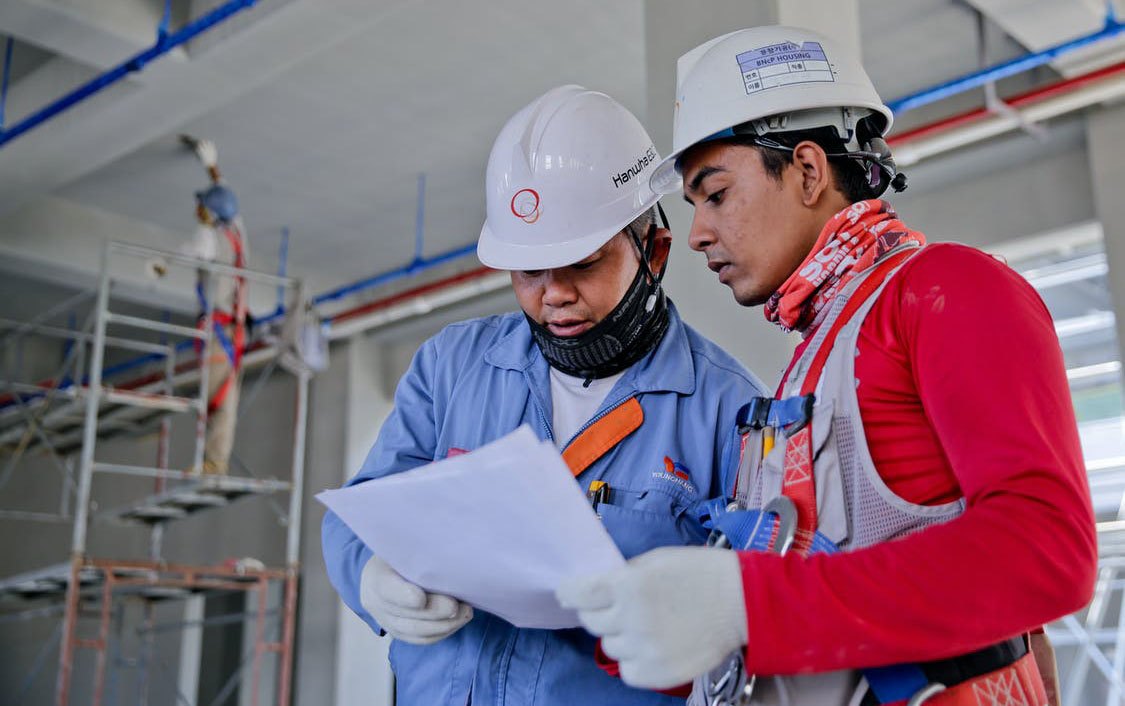The global construction market is set for a sustained period of strong growth post-COVID-19, driven by government spending on infrastructure and the transition to a net-zero society. The switch to more sustainable buildings and infrastructure, the upscaling of clean energy facilities and the adoption of modern building methods will transform the risk landscape, with radical changes in design, materials and processes.
These challenges add to currently stressed supply chains, shortages in materials and labor and increased costs, which all come against the backdrop of years-long tight margins in the industry. A new report from Allianz Global Corporate & Specialty (AGCS), Managing the new age of construction risk, explores both acute and long-term risk trends for the construction sector.
The strong growth outlook for the sector is based on a number of factors, such as rising populations in emerging markets and significant investment in alternative forms of energy, such as wind, solar and hydrogen, as well as power storage and transmission systems. The shift to electric transport will require investment in new plants and battery manufacturing facilities and charging infrastructure. Buildings are not only expected to improve their carbon footprint, but will also require improved coastal and flood defenses and sewage and drainage systems in many catastrophe-exposed regions in response to more frequent extreme weather events.
At the same time, governments in many countries are planning major public investments in large infrastructure projects to both stimulate economic activity after the pandemic crisis and to drive the low-carbon transition. In the U.S., a $1 trillion-plus infrastructure package touches everything from bridges and roads to the nation's broadband, water and energy systems. At the same time, the U.S. has announced plans to invest in a number of large infrastructure projects around the world in 2022 in response to China’s ambitious Belt and Road Initiative, which could stretch from East Asia to Europe. Four countries – China, India, the U.S. and Indonesia – are expected to account for almost 60% of global growth in construction over the next decade.
Downsides of the construction boom
The expected boom brings specific challenges in addition to benefits. In the medium term, sudden surges in demand could put supply chains under additional pressure and exacerbate existing shortages of materials and skilled labor, causing schedule and cost overruns. In addition, many in the industry may need to accelerate the implementation of efficiency and cost-control measures if profit margins have been affected in the COVID-19 economy, which can often impair quality and maintenance levels and increase susceptibility to errors.
See also: Construction Workers’ Mental Well-Being
Analysis by AGCS shows that design defects and poor workmanship are one of the leading causes of construction and engineering losses, accounting for around 20% of the value of almost 30,000 industry claims examined between 2016 and the end of 2020.
The enhanced sustainability and net-zero focus will strongly influence the traditional risk landscape in the construction sector. According to the UN Environment Program, buildings and the construction industry account for 38% of all energy-related carbon dioxide emissions. To cut carbon emissions, existing buildings will need to be refurbished and repurposed. Additionally, new materials and construction methods will need to be introduced across the market in relatively short periods. This will bring an increased risk of defects or may have unexpected safety, environmental or health consequences. For example, as a sustainable and cost-efficient material, timber's use in construction has increased in recent years. This has implications for fire and water damage risks. AGCS claims analysis shows that fire and explosion incidents already account for more than a quarter (26%) of the value of construction and engineering claims over the past five years – the most expensive cause of loss.
Upscaling clean energy – renewable risks
Expanding clean energy brings new risks, too. Offshore wind projects are growing and moving farther out to sea and into deeper waters, meaning the costs associated with any delays or repairs are increasing. Offshore wind farms, as well as onshore wind and solar projects, can also be exposed to serial losses. A design or manufacturing fault in a turbine, for example, can affect many projects. There have also been large claims from faulty foundations in solar parks and farms. Repairs to undersea cables, which weigh thousands of tons and require special ships to lay, can take more than a year. An offshore converter station alone can cost as much as $1.5 billion, comparable to an oil rig. A fire or explosion involving a converter, as seen recently in China, can result in a total loss.
The two sides of modular construction
Ultimately, modern building and production methods have the potential to transform construction, transferring more risk offsite and incorporating greater use of technology. Modular construction, in particular, provides many benefits, such as controlled factory-based quality management, less construction waste, a construction timeline cut in half compared with traditional methods and reduced disruption to the surrounding environment. However, it also raises risk concerns about repetitive loss scenarios.
The shortage of skilled labor in the construction industry is likely to further the trend toward offsite manufacturing and automation. At the same time, digitalization of construction creates cyber exposures, which engineering and building companies need to strengthen their defenses against. Today, the numerous parties involved on a construction site are connected through various shared IT platforms, which increases their vulnerability. Cyber risks can range from malicious attempts to gain access to sensitive data, to disruption of project site control and associated theft, to supply chain disruption, to potential corruption of project design data, resulting in delays and ultimately reputational risk for parties involved.
See also: COVID-19: Next Steps in Construction
Better protection of building sites against natural hazards and water damage
The need to reduce greenhouse gas emissions will not only drive a more sustainable approach to residential and commercial buildings and infrastructure but may also hasten the trend as the industry looks to achieve efficiencies and minimize waste. Construction sites also need to give more consideration to mitigate the impact of climate-driven events, such as wildfires, flash flooding and landslides. AGCS claims analysis shows that natural hazards are already the second most expensive cause of construction losses, behind fire and explosion, accounting for 20% of the value of claims over the past five years.
Meanwhile, water damage continues to be a major source of loss during construction. AGCS has seen a number of surprisingly large losses from leaks from pressurized water or fire systems that go undetected or occur out of business hours, on weekends or during periods when personnel are not on-site. Water leak detection and monitoring systems can help reduce the frequency and severity of water damage, mitigating expensive repairs and project delays.






